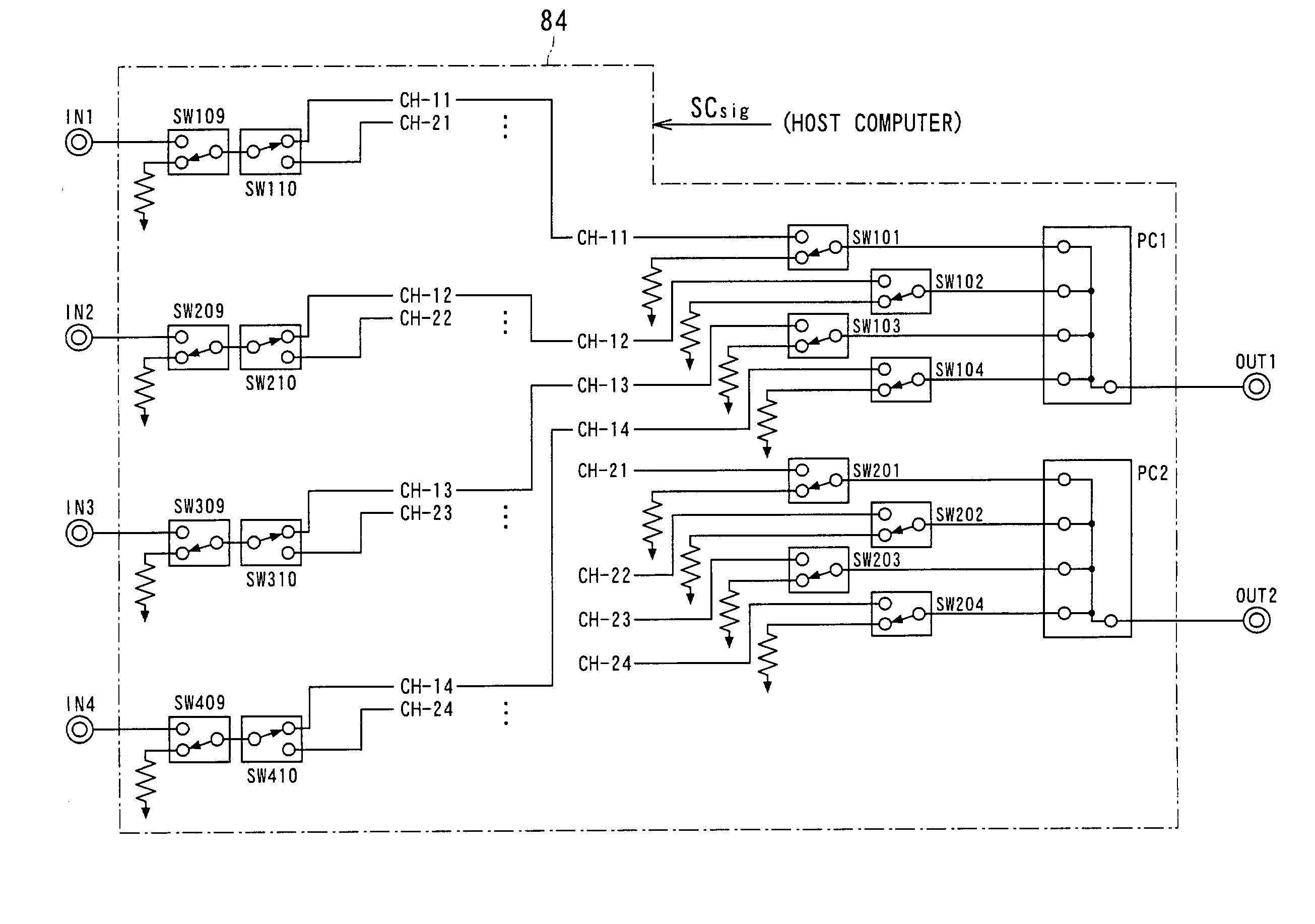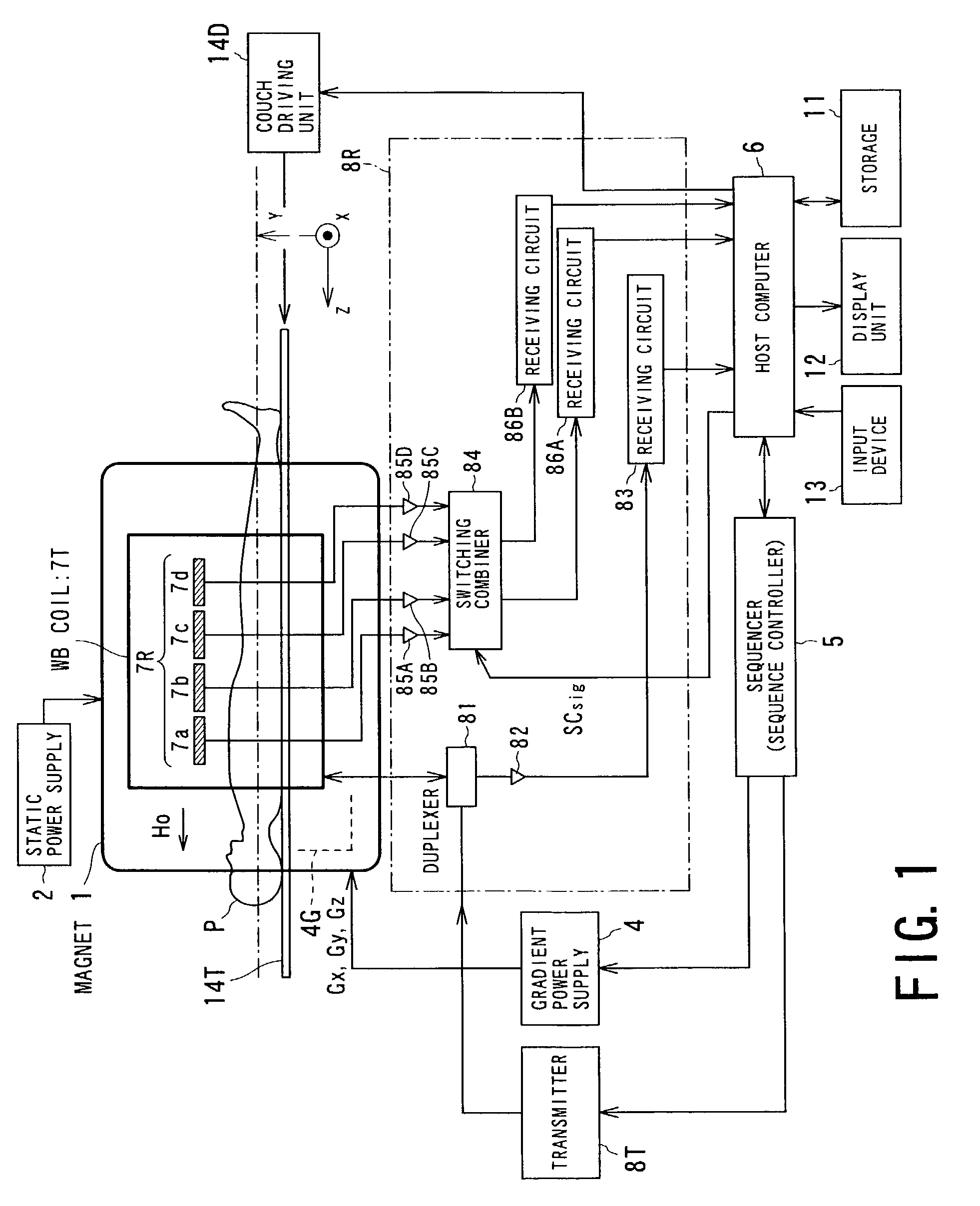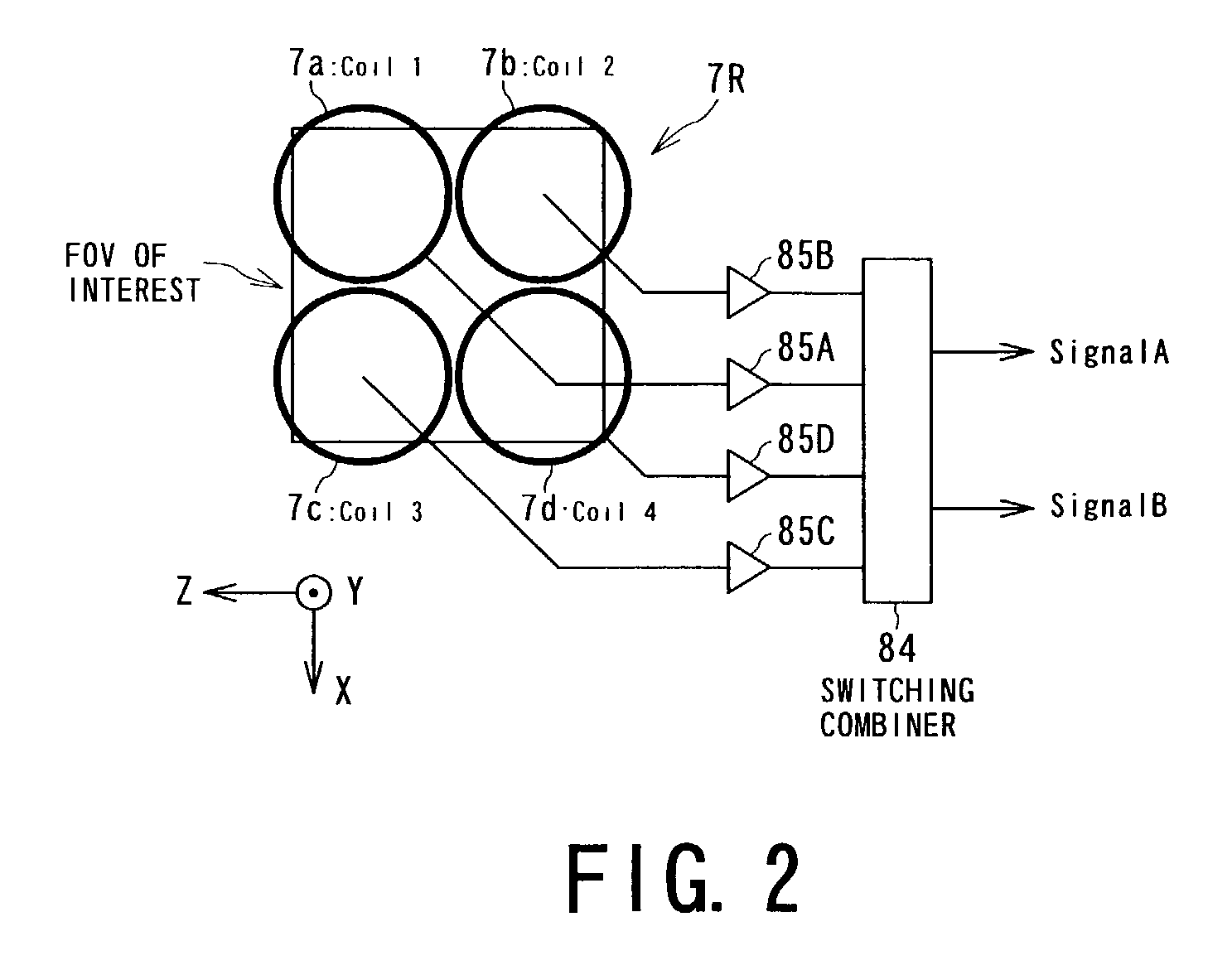Parallel MR imaging with use of multi-coil made of plural element coils
a multi-coil, coil technology, applied in the field of magnetic resonance imaging, can solve the problems of increasing manufacturing costs, not being able to continue to use calibration data once acquired over a plurality of patients, and fold-around phenomena at edges
- Summary
- Abstract
- Description
- Claims
- Application Information
AI Technical Summary
Benefits of technology
Problems solved by technology
Method used
Image
Examples
first embodiment
[0064](First Embodiment)
[0065]With reference to FIGS. 1 to 7, a first embodiment of the MR signal reception apparatus and the magnetic resonance imaging system of the present invention will now be described.
[0066]In this embodiment, the magnetic resonance imaging system will perform parallel MR imaging, wherein the MR signal reception apparatus is functionally included in the magnetic resonance imaging system.
[0067]With reference to FIG. 1, the entire configuration of the magnetic resonance imaging system according to the present embodiment will now be outlined.
[0068]This imaging system is configured to perform parallel MR imaging with the use of a multi-coil for MR images. As shown in FIG. 1, the system comprises a patient couch on which a patient P as an object to be imaged lies down, static-field generating part for generating a static magnetic field, magnetic-gradient generating part for appending positional information to the static magnetic field, transmitting / receiving part f...
second embodiment
[0173](Second Embodiment)
[0174]Referring to FIGS. 13A to 13C, to 16, various configurations of switching and combining signals detected from various types of multi-coils adopted for performing the parallel MR imaging according to the first embodiment. These configurations are used to switch and combine signals based on the size of an FOV (field of view) given as one imaging condition.
[0175]FIGS. 13A to 13C show the arrangement of a multi-coil 20 of which number of channels are larger than four channels described in the first embodiment. In this example, as shown in FIG. 13C, the multi-coil 20 is made up of twenty-four RF coils (i.e., twenty-four channels) arranged around a region to be imaged (including a region of interest) of an object P. The RF coils consist of object's right-side coils R1 to R4, object anterior-right coils AR1 to AR4, object's anterior-left coils AL1 to AL4, object's left-side coils L1 to L4, object's posterior-left coils PL1 to PL4, and object's posterior-right...
third embodiment
[0186](Third Embodiment)
[0187]Referring to FIGS. 17 to 21, a third embodiment of the MR signal reception apparatus according to the present invention will now be described. In this embodiment, the same or identical constituents as or to those descried in the foregoing first embodiment will be described with use of the same reference, omitting or simplifying the explanation.
[0188]The third embodiment essentially relates to an MR signal reception apparatus having a reception multi-coil including a plurality of element coils and switching means for switching a reception state of MR signals detected by the element coils depending on imaging conditions. The switching means is formed into means for selectively switching the plurality of element coils into a desired one mode from a plurality of combined coil modes predetermined in compliance with the imaging conditions.
[0189]FIG. 17 outlines the configuration of the MR signal reception apparatus according to the present embodiment. This MR...
PUM
 Login to View More
Login to View More Abstract
Description
Claims
Application Information
 Login to View More
Login to View More - R&D
- Intellectual Property
- Life Sciences
- Materials
- Tech Scout
- Unparalleled Data Quality
- Higher Quality Content
- 60% Fewer Hallucinations
Browse by: Latest US Patents, China's latest patents, Technical Efficacy Thesaurus, Application Domain, Technology Topic, Popular Technical Reports.
© 2025 PatSnap. All rights reserved.Legal|Privacy policy|Modern Slavery Act Transparency Statement|Sitemap|About US| Contact US: help@patsnap.com



